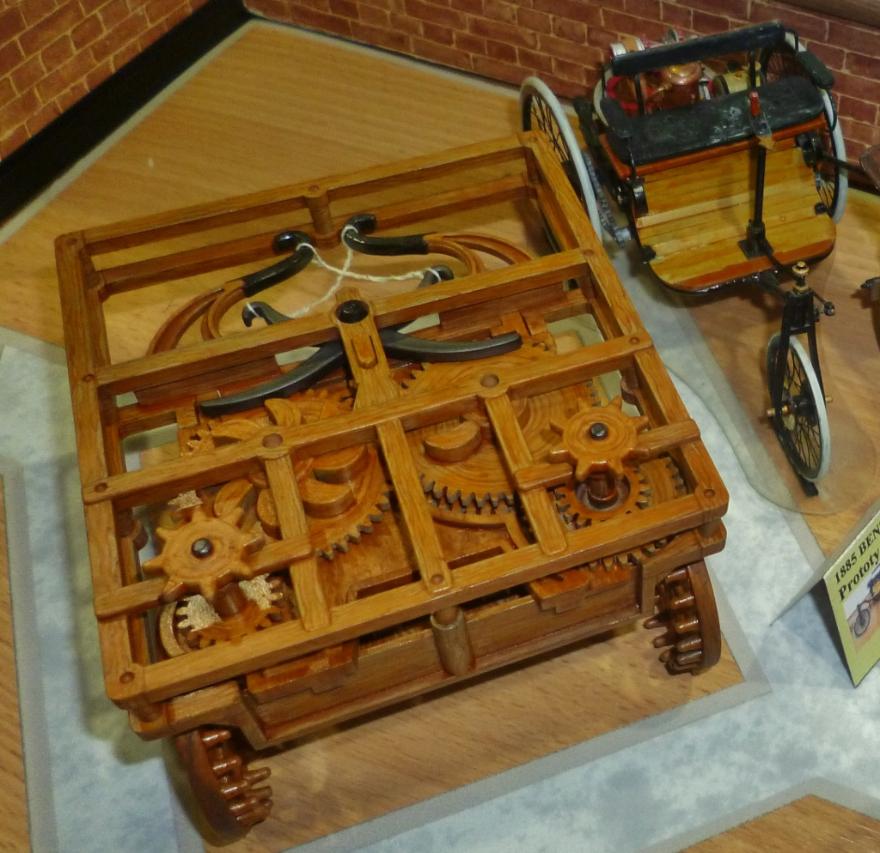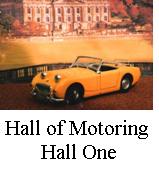
Leonardo Da Vinci's 1478 self propelled cart.
Musician, anatomist, geologist, cartographer, botanist, architect, mathematician, sculptor, painter, inventor, engineer and writer. Leonardo di ser Piero da Vinci has been described as the archetype of the Renaissance Man. That would be true if all renaissance men had had "unquenchable curiosity" and "feverishly inventive imagination". Leonardo da Vinci would have been head and shoulders above ordinary men even today, an equal of Einstein or Hawking, the sort of great mind that comes around once in a generation.
Widely considered the worlds greatest ever painter to make such a statement ignores his other talents and does an injustice to his name. This polymath's list of skills is very long and his influence felt at the time through his art would later give the world the impetus for ideas like aircraft, helicopters and submarines; fantastical things in his day and taken for granted today. His devises are really quite logical, seen in the light of our time there is no mysticism involved and his methodology was empirical, unusual for his time, and, thanks to his record keeping in numerous journals, we can see projects as divers as bridge building to concentrating solar power and even outlining a rudimentary theory of plate tectonics.
In the Codex Atlanticus, a 1119 leave volume of da Vinci's work covering 1478 to 1519, there is a diagram for a “self-propelling cart”. Like many of de Vinici's projects it is wise to consider it in conjunction with other projects of similar date or grouping; “Leonardo’s famous bicycle” for instance, or perhaps the armoured vehicle or the scythed chariots. In considering all the aspects it becomes possible to see where da Vinci's train of thought went and what his construction methods might have been. If you are wondering why da Vinci, or his contemporary Francesco di Giorgio Martini, were drawing up plans for mechanical vehicles then it must be remembered that transporting heavy weights like columns, bells, cannons, obelisks and pillars was a mighty task in that time.
Da Vinci's cart uses the principles of clockwork and the age old use of winding power into bowed wood with rope to move it along, neither being cutting edge technology for the time. The idea of using it in a cart and the calculations needed to use the power without damage to the vehicle itself were much more important and scientific. Clocks of the era used the weight of the pendulum for power and the wound spring was not known at that time but da Vinci clearly had a good understanding of the principles of clock workings. Knowing that force drops significantly as a spring unwinds Leonardo included a balance wheel to help deliver smooth and stable motion. He also used two springs, when one was enough to power the cart, used in opposition again aiding stability. A rudimentary braking system was incorporated and a mechanism similar to differential that also allows wheel distance variations when turning. Although the carts steering can be programmed there is also provision for a steering arm reminiscent of a 19c tiller.
Leonardo's self-propelled cart is considered the ancestor of the modern automobile but in many ways it has more in common with late 19c clockwork toys than motor cars with internal combustion engines. Even Leonardo himself apparently considered the cart to be something of a toy. Equally importantly it has no driver, the steering is “programmed” by a series of blocks set among the gears.
Of course it isn't hard to see how useful such a cart would have been and that any steering issues, or other shortfalls, could have been overcome. The drawings made by da Vinci are just sketches and don’t fully reveal the mechanism inside very different to the blueprints, or Cad-Cam systems, we have today.
There have been several interpretations of da Vinci's machine built and they all have differences. Even this model is a subjective interpretation but the ideas and history embodied in it are worthy of note and remembrance.









Italeri and Revell had drive to educate and attract younger model makers and both companies released a series of models to this end..... the idea has been dubbed "Edumodelling" in some quarters. The da Vinci vehicle boxed by Italeri and identified as kit # 3101, was released in 2010. There is no scale on the box but on one forum it has been touted as 1/7th scale, It may be 1/7th scale of one of the replica versions in a museum but as all are interpretative the scale is also questionable. Reissued by Academy in 2014, # 18129, the moulds turned out sprues again this time with a new box and it is one of these Academy boxings Ian purchased.
Apparently the kit can be built without glue or paint in around 30 mins, but it has much more potential than just an educational toy.
Ian airbrushed Alclad II black primer over the model parts then applied a base coat of light coffee brown mixed from two DecoArt acrylic colours. He then hand painted two different colours of grain over the base before covering it all with a coat of thinned Tamiya clear orange. The final touch was a coat of Johnson's Klear floor polish. There are several interpretations of da Vinci's sketches so it is hard to know what colours to use. Ian did choose to use matt black paint on some parts and then use C1 Metalizer Powder to give them a more realistic appearance.
The model can indeed be put together very quickly but it needed more than just some paint to bring it to life. Some control cables were added made from cotton wound to give it more realism and strengthened by soaking it in Johnson's Klear. A little bit of tying and winding and a little more life was added.
Ian spent a week building this model; Rod suggested he took it apart again and mad one half the size!
